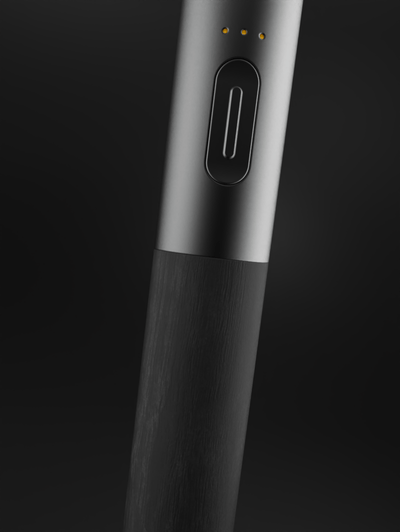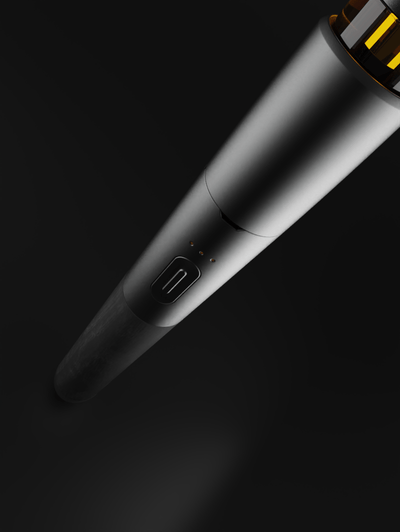Materials and Manufacturing
The quest for sustainable practices extends even to the realm of vaping, where the materials used in devices and manufacturing processes can have significant environmental impacts. Understanding these factors is crucial when evaluating the eco-friendliness of products like the Craftsman Series Vape.
Device Materials
Device materials play a pivotal role in determining the environmental footprint of vape products. Many vapes utilize plastics, metals, and glass, each with its own implications for resource extraction, production processes, and end-of-life disposal. Plastics, while lightweight and versatile, often derive from fossil fuels and contribute to plastic pollution if not properly recycled. Metals like stainless steel and aluminum are generally more durable but require energy-intensive mining and refining processes. Glass, though recyclable, can be fragile and contribute to waste during transport and handling.
Manufacturing Processes
Manufacturing processes also significantly influence a vape’s eco-friendliness. Energy consumption during production, emissions released into the atmosphere, and waste generated are all critical considerations. Processes like molding, machining, and coating can involve the use of chemicals and solvents that may be harmful to the environment if not managed responsibly.
Furthermore, the durability and repairability of a vape device impact its overall environmental footprint. Devices designed for longevity and ease of repair reduce the need for frequent replacements, thereby minimizing resource consumption and waste generation.
Battery Usage and Disposal
Another key consideration in the sustainability of vaping is battery usage and disposal. Vape devices rely on rechargeable batteries, often lithium-ion, which require mining of raw materials and have a finite lifespan. Proper charging practices and responsible recycling are essential to minimize the environmental impact associated with these batteries.
Battery Lifespan
Battery usage and disposal present significant considerations in the eco-friendliness of vape devices like the Craftsman Series Vape. Lithium-ion batteries, commonly used in vapes, require mining for materials such as lithium, cobalt, and nickel, which can have detrimental effects on ecosystems and communities. The production process for these batteries also involves energy-intensive steps and can release harmful greenhouse gases.
The lifespan of a vape battery is finite, and its disposal requires careful consideration. Improperly discarded batteries can leach toxic chemicals into the environment, contaminating soil and water sources. Recycling programs are crucial for recovering valuable materials from spent batteries and preventing their release into landfills.
Recycling and Disposal Options
To minimize the environmental impact of vaping, it’s essential to practice responsible battery usage and disposal. Start by using a quality charger that is compatible with your vape device and follow the manufacturer’s charging guidelines. Overcharging or using damaged chargers can shorten battery life and increase the risk of overheating or damage.
When a battery reaches the end of its useful life, it’s crucial to dispose of it properly. Many electronics retailers and recycling centers offer battery recycling programs. Look for designated bins or drop-off locations for lithium-ion batteries. Never throw batteries in regular trash or compost bins as they can pose a hazard to the environment.
Consider purchasing vape devices with removable batteries, as this allows for easier replacement and potential reuse of older batteries. Explore brands that prioritize sustainable battery manufacturing practices, such as using ethically sourced materials and implementing responsible recycling initiatives.
Packaging and Shipping
Packaging and shipping contribute significantly to the environmental footprint of products, including vape devices. The choice of packaging materials, their reusability or recyclability, and the transportation methods employed all have implications for resource consumption, waste generation, and greenhouse gas emissions.
Material Composition of Packaging
The Craftsman Series Vape’s packaging should be examined to determine its eco-friendliness.
- Look for packages made from recycled content or sustainably sourced materials like cardboard or paper.
- Check if the packaging is recyclable in your area.
- See if the manufacturer uses minimal packaging and avoids unnecessary plastic elements.
- Consider the shipping methods used. Opting for ground transportation over air freight can significantly reduce carbon emissions.
Shipping Methods and Emissions
Packaging and shipping play a significant role in the overall environmental impact of products. The materials used for packaging, their reusability or recyclability, and the transportation methods employed all contribute to resource consumption, waste generation, and greenhouse gas emissions.
When evaluating the eco-friendliness of the Craftsman Series Vape, it’s important to consider the following aspects of its packaging and shipping:
* **Packaging Materials:** Look for packages made from recycled content or sustainably sourced materials like cardboard or paper. Avoid packaging with excessive plastic components.
* **Recyclability:** Check if the packaging is recyclable in your local area. If not, consider if it can be repurposed for other uses.
* **Minimalism:** Evaluate whether the manufacturer utilizes minimal packaging and avoids unnecessary elements. Excess packaging increases waste.
* **Shipping Methods:** Opting for ground transportation over air freight can significantly reduce carbon emissions associated with shipping.
Vapor Production and Health Impacts
The environmental impact of vaping extends beyond just the vapor itself.
Composition of Vaping Liquids
Vapor production involves heating a liquid, typically e-liquid, which often contains propylene glycol (PG), vegetable glycerin (VG), flavorings, and nicotine. When heated, these components transform into an aerosol, or vapor, that is inhaled. The health impacts of vaping are complex and still being researched, but some known risks include lung irritation, cardiovascular strain, and the potential for addiction, particularly among youth.
The composition of e-liquids can vary widely, with different manufacturers using different blends of PG, VG, flavorings, and nicotine concentrations. Propylene glycol is a common humectant, found in food and pharmaceuticals, that can cause respiratory irritation in some individuals. Vegetable glycerin is another humectant that may also contribute to lung irritation. Flavorings in e-liquids can range from natural extracts to artificial chemicals, some of which have been linked to health concerns.
Nicotine, a highly addictive substance, is present in many e-liquids. It can increase heart rate and blood pressure, raise the risk of cardiovascular disease, and harm brain development in adolescents.
Environmental Impact of Vapor
The environmental impact of vaping extends beyond just the vapor itself.
Vapor production involves heating a liquid, typically e-liquid, which often contains propylene glycol (PG), vegetable glycerin (VG), flavorings, and nicotine. When heated, these components transform into an aerosol, or vapor, that is inhaled. The health impacts of vaping are complex and still being researched, but some known risks include lung irritation, cardiovascular strain, and the potential for addiction, particularly among youth.

The composition of e-liquids can vary widely, with different manufacturers using different blends of PG, VG, flavorings, and nicotine concentrations. Propylene glycol is a common humectant, found in food and pharmaceuticals, that can cause respiratory irritation in some individuals. Vegetable glycerin is another humectant that may also contribute to lung irritation. Flavorings in e-liquids can range from natural extracts to artificial chemicals, some of which have been linked to health concerns.
Nicotine, a highly addictive substance, is present in many e-liquids. It can increase heart rate and blood pressure, raise the risk of cardiovascular disease, and harm brain development in adolescents.
Sustainability Practices of Craftsman Series Vape Manufacturer
The Craftsman Series Vape’s environmental impact goes beyond its physical components. Understanding the sustainability practices employed throughout its lifecycle is crucial for determining its overall eco-friendliness.
Company Policies and Initiatives
Device materials play a pivotal role in determining the environmental footprint of vape products. Many vapes utilize plastics, metals, and glass, each with its own implications for resource extraction, production processes, and end-of-life disposal. Plastics, while lightweight and versatile, often derive from fossil fuels and contribute to plastic pollution if not properly recycled. Metals like stainless steel and aluminum are generally more durable but require energy-intensive mining and refining processes. Glass, though recyclable, can be fragile and contribute to waste during transport and handling.
Manufacturing processes also significantly influence a vape’s eco-friendliness. Energy consumption during production, emissions released into the atmosphere, and waste generated are all critical considerations. Processes like molding, machining, and coating can involve the use of chemicals and solvents that may be harmful to the environment if not managed responsibly.
Furthermore, the durability and repairability of a vape device impact its overall environmental footprint. Devices designed for longevity and ease of repair reduce the need for frequent replacements, thereby minimizing resource consumption and waste generation.
To minimize the environmental impact of vaping, responsible battery usage and disposal are crucial. Start by using a quality charger compatible with your vape device and follow the manufacturer’s charging guidelines. Overcharging or using damaged chargers can shorten battery life and increase the risk of overheating or damage.
When a battery reaches the end of its useful life, dispose of it properly. Many electronics retailers and recycling centers offer battery recycling programs. Look for designated bins or drop-off locations for lithium-ion batteries. Never throw batteries in regular trash or compost bins as they can pose a hazard to the environment.

Consider purchasing vape devices with removable batteries, allowing for easier replacement and potential reuse of older batteries. Explore brands that prioritize sustainable battery manufacturing practices, such as using ethically sourced materials and implementing responsible recycling initiatives.
Packaging and shipping contribute significantly to the environmental footprint of products, including vape devices. The choice of packaging materials, their reusability or recyclability, and the transportation methods employed all have implications for resource consumption, waste generation, and greenhouse gas emissions.
When evaluating the eco-friendliness of the Craftsman Series Vape, it’s important to consider these aspects of its packaging and shipping:
- Look for packages made from recycled content or sustainably sourced materials like cardboard or paper.
- Check if the packaging is recyclable in your area.
- See if the manufacturer uses minimal packaging and avoids unnecessary plastic elements.
- Consider the shipping methods used. Opting for ground transportation over air freight can significantly reduce carbon emissions.
Certifications and Accreditations
Understanding the environmental impact of vaping products like the Craftsman Series Vape involves examining various factors throughout their lifecycle. The company’s sustainability practices, certifications, and accreditations provide valuable insights into its commitment to reducing its ecological footprint.
While specific information about the Craftsman Series Vape’s certifications and accreditations may not be readily available, seeking out details on the manufacturer’s website or contacting their customer service can shed light on their environmental initiatives. Look for mentions of certifications related to sustainable manufacturing practices, responsible sourcing of materials, or energy efficiency.
Furthermore, exploring independent third-party organizations that assess and rate the sustainability of companies in the vaping industry can provide valuable insights into the Craftsman Series Vape’s performance.
Consumer Responsibility
Consumer responsibility plays a crucial role in determining the overall environmental impact of products like vape devices. By making informed choices based on factors such as device materials, manufacturing processes, battery usage, packaging, and the manufacturer’s sustainability practices, consumers can contribute to a more sustainable vaping experience.
Proper Device Usage and Maintenance
The quest for sustainable practices extends even to the realm of vaping, where the materials used in devices and manufacturing processes can have significant environmental impacts. Understanding these factors is crucial when evaluating the eco-friendliness of products like the Craftsman Series Vape.

Device materials play a pivotal role in determining the environmental footprint of vape products. Many vapes utilize plastics, metals, and glass, each with its own implications for resource extraction, production processes, and end-of-life disposal. Plastics, while lightweight and versatile, often derive from fossil fuels and contribute to plastic pollution if not properly recycled. Metals like stainless steel and aluminum are generally more durable but require energy-intensive mining and refining processes. Glass, though recyclable, can be fragile and contribute to waste during transport and handling.
Manufacturing processes also significantly influence a vape’s eco-friendliness. Energy consumption during production, emissions released into the atmosphere, and waste generated are all critical considerations. Processes like molding, machining, and coating can involve the use of chemicals and solvents that may be harmful to the environment if not managed responsibly.
Furthermore, the durability and repairability of a vape device impact its overall environmental footprint. Devices designed for longevity and ease of repair reduce the need for frequent replacements, thereby minimizing resource consumption and waste generation.
Another key consideration in the sustainability of vaping is battery usage and disposal. Vape devices rely on rechargeable batteries, often lithium-ion, which require mining of raw materials and have a finite lifespan. Proper charging practices and responsible recycling are essential to minimize the environmental impact associated with these batteries.
Battery usage and disposal present significant considerations in the eco-friendliness of vape devices like the Craftsman Series Vape. Lithium-ion batteries, commonly used in vapes, require mining for materials such as lithium, cobalt, and nickel, which can have detrimental effects on ecosystems and communities. The production process for these batteries also involves energy-intensive steps and can release harmful greenhouse gases.
The lifespan of a vape battery is finite, and its disposal requires careful consideration. Improperly discarded batteries can leach toxic chemicals into the environment, contaminating soil and water sources. Recycling programs are crucial for recovering valuable materials from spent batteries and preventing their release into landfills.
To minimize the environmental impact of vaping, it’s essential to practice responsible battery usage and disposal. Start by using a quality charger that is compatible with your vape device and follow the manufacturer’s charging guidelines. Overcharging or using damaged chargers can shorten battery life and increase the risk of overheating or damage.
When a battery reaches the end of its useful life, it’s crucial to dispose of it properly. Many electronics retailers and recycling centers offer battery recycling programs. Look for designated bins or drop-off locations for lithium-ion batteries. Never throw batteries in regular trash or compost bins as they can pose a hazard to the environment.
Consider purchasing vape devices with removable batteries, as this allows for easier replacement and potential reuse of older batteries. Explore brands that prioritize sustainable battery manufacturing practices, such as using ethically sourced materials and implementing responsible recycling initiatives.
Packaging and shipping contribute significantly to the environmental footprint of products, including vape devices. The choice of packaging materials, their reusability or recyclability, and the transportation methods employed all have implications for resource consumption, waste generation, and greenhouse gas emissions.
When evaluating the eco-friendliness of the Craftsman Series Vape, it’s important to consider these aspects of its packaging and shipping:
- Look for packages made from recycled content or sustainably sourced materials like cardboard or paper.
- Check if the packaging is recyclable in your area.
- See if the manufacturer uses minimal packaging and avoids unnecessary plastic elements.
- Consider the shipping methods used. Opting for ground transportation over air freight can significantly reduce carbon emissions.
Understanding the environmental impact of vaping products like the Craftsman Series Vape involves examining various factors throughout their lifecycle. The company’s sustainability practices, certifications, and accreditations provide valuable insights into its commitment to reducing its ecological footprint.
While specific information about the Craftsman Series Vape’s certifications and accreditations may not be readily available, seeking out details on the manufacturer’s website or contacting their customer service can shed light on their environmental initiatives. Look for mentions of certifications related to sustainable manufacturing practices, responsible sourcing of materials, or energy efficiency.
Furthermore, exploring independent third-party organizations that assess and rate the sustainability of companies in the vaping industry can provide valuable insights into the Craftsman Series Vape’s performance.
Consumer responsibility plays a crucial role in determining the overall environmental impact of products like vape devices. By making informed choices based on factors such as device materials, manufacturing processes, battery usage, packaging, and the manufacturer’s sustainability practices, consumers can contribute to a more sustainable vaping experience.
Responsible Disposal and Recycling Practices
Consumer responsibility is paramount when it comes to minimizing the environmental impact of vaping.
Here’s how consumers can make a difference:
* **Choose Eco-Friendly Devices:** Opt for vapes made from durable materials that are designed for longevity and repairability. Look for certifications or information about sustainable manufacturing practices.
* **Practice Responsible Battery Use & Disposal:**
* Use quality chargers compatible with your device.
* Avoid overcharging batteries.
* Recycle spent batteries properly at designated collection points or through battery recycling programs offered by retailers. Never dispose of them in regular trash.
* **Be Mindful of Packaging:**
* Choose vapes with minimal packaging and made from recyclable materials.
* Reuse packaging if possible.
* **Consider E-liquid Choices:** Opt for e-liquids with natural flavorings and avoid those with potentially harmful chemicals.
Remember, even small changes in our consumption habits can collectively make a big impact on the environment.
Buy high-quality Vessel Craftsman Series vape pens
- Why Has My Lip Filler Disappeared After 2 Days - November 11, 2025
- What Is The Filler In The Hollow Of Cheeks? - November 9, 2025
- What Are The Best Exercises To Pair With Bum Filler Injections? - November 8, 2025
